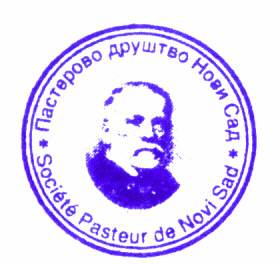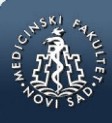md-medicaldata
Main menu:
- Naslovna/Home
- Arhiva/Archive
- Godina 2024, Broj 1
- Godina 2023, Broj 3
- Godina 2023, Broj 1-2
- Godina 2022, Broj 3
- Godina 2022, Broj 1-2
- Godina 2021, Broj 3-4
- Godina 2021, Broj 2
- Godina 2021, Broj 1
- Godina 2020, Broj 4
- Godina 2020, Broj 3
- Godina 2020, Broj 2
- Godina 2020, Broj 1
- Godina 2019, Broj 3
- Godina 2019, Broj 2
- Godina 2019, Broj 1
- Godina 2018, Broj 4
- Godina 2018, Broj 3
- Godina 2018, Broj 2
- Godina 2018, Broj 1
- Godina 2017, Broj 4
- Godina 2017, Broj 3
- Godina 2017, Broj 2
- Godina 2017, Broj 1
- Godina 2016, Broj 4
- Godina 2016, Broj 3
- Godina 2016, Broj 2
- Godina 2016, Broj 1
- Godina 2015, Broj 4
- Godina 2015, Broj 3
- Godina 2015, Broj 2
- Godina 2015, Broj 1
- Godina 2014, Broj 4
- Godina 2014, Broj 3
- Godina 2014, Broj 2
- Godina 2014, Broj 1
- Godina 2013, Broj 4
- Godina 2013, Broj 3
- Godina 2013, Broj 2
- Godina 2013, Broj 1
- Godina 2012, Broj 4
- Godina 2012, Broj 3
- Godina 2012, Broj 2
- Godina 2012, Broj 1
- Godina 2011, Broj 4
- Godina 2011, Broj 3
- Godina 2011, Broj 2
- Godina 2011, Broj 1
- Godina 2010, Broj 4
- Godina 2010, Broj 3
- Godina 2010, Broj 2
- Godina 2010, Broj 1
- Godina 2009, Broj 4
- Godina 2009, Broj 3
- Godina 2009, Broj 2
- Godina 2009, Broj 1
- Supplement
- Galerija/Gallery
- Dešavanja/Events
- Uputstva/Instructions
- Redakcija/Redaction
- Izdavač/Publisher
- Pretplata /Subscriptions
- Saradnja/Cooperation
- Vesti/News
- Kontakt/Contact
 Pasterovo društvo
Pasterovo društvo
- Disclosure of Potential Conflicts of Interest
- WorldMedical Association Declaration of Helsinki Ethical Principles for Medical Research Involving Human Subjects
- Committee on publication Ethics
CIP - Каталогизација у публикацији
Народна библиотека Србије, Београд
61
MD : Medical Data : medicinska revija = medical review / glavni i odgovorni urednik Dušan Lalošević. - Vol. 1, no. 1 (2009)- . - Zemun : Udruženje za kulturu povezivanja Most Art Jugoslavija ; Novi Sad : Pasterovo društvo, 2009- (Beograd : Scripta Internacional). - 30 cm
Dostupno i na: http://www.md-medicaldata.com. - Tri puta godišnje.
ISSN 1821-1585 = MD. Medical Data
COBISS.SR-ID 158558988
TOPICAL MEDICAMENTS IN THE TREATMENT OF INFECTED DENTAL ROOT CANAL
PRIMENA LOKALNIH PREPARATA U LEČENJU INFICIRANIH KANALA KORENA ZUBA
Authors
Tatjana Lemić1, Dragana Dakovic, Tamara Zurovac, Danica Pejaković, Vladan Kovačević
1 Vojno medicinska akademija
• The paper was received on 29. 02.2016. / Accepted on 09.03.2016.
Abstract
Bacteria and their by-products play an essential role in the development of dental pulp necrosis and periapical diseases. Therefore, the removal of pathogenic flora from the root canal system is the ultimate goal in endodontic treatment. Accepted steps of endodontic treatment in eradication of dental root canal infection include instrumental debridement by shaping and cleaning, irrigation by disinfectant solutions, such as sodium hypochlorite (NaOCl) and chlorhexidine (CHX) and in use of the antimicrobial agents. The choice of intracanal medicament depends on the proper diagnosis and of the treated state, as well as on the identification of causative bacteria and the mechanisms of their growth and survival. The most commonly used agents are Ca (OH)2 and antibiotic pastes. Each of the agents has advantages and disadvantages. Therefore, the further clinical studies are needed in order to select the most effective agent and/or their corresponding combinations.
Key words
teeth root canal infection, endodontic treatment, intercanal medicaments
References
- Bergenholtz G. Pathogenic mechanisms in pulpal disease. J Endod 1990; 16: 98-101.
- Hahn CL, Best AM, Tew JG. Cykotine induction by Streptococcus mutans and pulpal pathogenesis. Infect Immun 2000; 68: 6785-6789.
- Bergenholtz G, Horsted-Bindslev P, Reit C. Textbook of Endodontology. Second edition. Wiley-Blackwell; 2010.
- Schafer E. Irrigation of the root canal. Endo 2007; 1(1): 11-27.
- Siqueira J, Rocas I. Bacterial Pathogenesis and Mediators in Apical Periodontitis. Braz Dent J 2007; 18(4): 267-280.
- Peciuliene V, Maneliene R, Balcikonyte E, Drukteinis S, Rutkunas V. Microorganisms in root canal infections: a review. Stomatologija, Baltic Dental and Maxillofacial Journal 2008; 10: 4-9.
- Rolph HJ, Lennon A, Riggio MP et al. Molecular identification of microorganisms from endodontic infections. J Clin Microbiol 2001; 39: 3282-9.
- Barbosa CAM, Goncalves RB, Siqueira JF, De Uzeda M. Evaluation of the antibacterial activities of calcium hydroxide, chlorhexidine, and camphorated paramonochlorophenol as intra canal medicament. A clinical and laboratory study. JEndodon 1997; 23: 297-299.
- Sedgley C. Root canal irrigation—A historical perspective. J Hist Dent. 2004; 52: 61–5.
- Zehnder M. Root canal irrigants. J Endod 2006; 32: 489-398.
- McDonnell G, Russell D. Antiseptics and disinfectans: activity, action and resistance. Clin Microbial Rev 1999; 12:147-179.
- Silva IA, Leonardo MR, Assed S, Tanomary Filho M. Histological study of the effect of some irriganting solutions on bacterial endotoxin in dogs. Braz Dent J 2004; 15: 109-114.
- Yamada RS, Armas A, Goldman M, Lin PS. A scanning electron microscopic cmparasion of a high volume final flush with several irrigating solutions. Part 3. J Endod 1983; 9: 137-142.
- Viana ME, Gomes BP, Berber VB, Zaia AA, Ferraz CC, de Souza-Filho Fl. In vitro evaluation of the antimicrobial activity of chlorhexidine and sodium hypochlorite. Oral Surg. Orall med. Oral Pathol. Oral Radiol. Endod 2004; 97: 79-84.
- Peciuliene V, Reynaud A, Balciuniene I, Haapasalo M. Isolation of yeasts and enteric bacteria in root filled teeth with chronic apical periodontitis. Int EndodJ 2001; 34: 429-434.
- Spratt DA, Pratten J, Wiklson M, Gulabivala K. An in vitro evaluation of the antimicrobial efficiacy of irrigants on biofilms of root canal isolates. Int Endod J 2001; 34: 300-307.
- Dunavant TR, Pratten J, Glickman GN, Solomon ES, Honeyman AL. Comparative evaluation of endodontic irrigants against Enterococus faecalis biofilms. J Endod 2006; 32: 527-531.
- Siqueira JF, Rocas IN, Santos SR, Lima KC, Magalhaes FA, de Uzeda M. Efficacy of instrumentation techniques and irrigation regiments in reducing the bacterial population within root canal. J Endod 2002; 28: 181-184.
- Chang YC, Huang FM, Tai KW, Chou MY. The effect of sodium hypochlorite and chloehexidine on cultured human periodontal ligament cells. Oral Surg Oral Med Oral Pathol Oral Radiol Endod 2001; 92: 446-450.
- Sirtes G, Waltimo T, Schaetzle M, Zehnder M. The effects of temperature on sodium hypochlorite short term stability, pulp dissolution capacity, and antimicrobial eficacy. J Endod 2005; 31: 669-671.
- Hulsmann M, Hahn W. Complications during root canal irrigation: literature review and case reports. Int Endod J 2000; 33: 186-193.
- Gomes BPFA, Souza SFC, Ferraz CCR, et al. Effectiveness of 2% chlorhexidine gel and calcium hydroxide against Enterococcus faecalis in bovine root dentine in vitro. Int Endod J 2003;36:267-275.
- White RR, Janer LR, Hays GL. Residual antimicrobial activity associated with a chlorhexidine endodontic irrigant used with sodium hypochlorite. Am J Dent 1999; 12: 148-150.
- Zamany A, Safavi K, Spangberg LS. The effect of chlorhexidine as an endodontic disinfectant. Oral Surg Oral Med Oral Pathol Oral Radiol Endod 2003; 96: 1290-1294.
- Dametto FR, Ferraz CC, Gomes BP, Zaia AA, Teixeira FB, de Souza-Filho FJ. In vitro assessment of the immediate and prolonged antimicrobial action of chlorhexidine gel as an endodontic irrigant against Enterococcus faecalis. Oral Surg Oral Med Oral Pathol Oral Radiol Endod. 2005;99(6):768–72.
- Dammaschke T, Schneider U, Stratmann U, Mokrys K, Yoo JM, Schafer E. Effect of root canal dressings on the repair of inflamed periapical tissue. Acta Odont Scand 2005; 63: 143-152.
- Tanomaru Filho M, Leonardo MR, Silva LAB, Anibal FF, Facciplo LH. Inflammatory response to different endodontic irrigation solutions. Int Endod J 2002; 35: 735-739.
- Naenni N, Thoma K, Zehnder M. Soft tissue dissolution capacity of currently used and potential endodontic irrigants. J Endod 2004; 30: 785-787.
- Siqueira JF Jr, Lopes HP. Mechanisms of antimicrobial activity of calcium hydroxide: a critical review. Int Endod J 1999; 32: 361- 369.
- Rehman K, Saunders WP, Foye RH, Sharkey SW. Calcium ion diffusion from calcium hydroxide-containing materials in endodontically-treated teeth: an in vitro study. Int Endod J 1996; 29: 271-279.
- Tang G, Samaranayake LP, Yip H-K. Molecular evaluation of residual endodontic micro-organisms after instrumentation, irrigation and medication with either calcium hydroxide or Septomixine. Oral Dis 2004; 10: 389-397.
- Siqueira JF Jr, Lopes HP. Mechanisms of antimicrobial activity of calcium hydroxide: a critical review. Int Endod J 1999; 32: 361- 369.
- Sundqvist G, Figdor D, Persson S, Sjögren U. Microbiologic analysis of teeth with failed endodontic treatment and the outcome of conservative re-treatment. Oral Surg Oral Med Oral Pathol Oral Radiol Endod 1998; 85: 86-93.
- De Souza CAS, Teles RP, Souto R, Chaves MAE, Colombo APV. Endodontic therapy associated with calcium hydroxide as an intracanal dressing: microbiologic evaluation by the checkerboard DNA-DNA hybridization technique. J Endod 2005; 31: 79-83.
- Waltimo TMT, Sirén EK, Orstavik D, Haapasalo MO. Susceptibility of oral Candida species to calcium hydroxide in vitro. Int Endod J 1999; 32: 94-98.
- Abbott PV, Hume WR, Pearman JM. Antibiotics and endodontics. Aust Dent J 1990; 35: 50-60.
- Abbott PV. Medicaments: aids to success in endodontics. Part 1. A review of literature. Aust Dent J 1990;35:438-448.
- Abbott PV, Heithersay GS, Hume WR. Release and diffusion through human tooth roots in vitro of corticosteroid and tetracycline trace molecules from Ledermix paste. Endod Dent Traumatol 1988;4:55-62.
- Ehrmann EH, Messer HH, Adams GG. The relationship of intracanal medicaments to postoperative pain in endodontics. Int Endod J 2003;36:868-875.
- 40. Ehrmann EH. The effect of triamcinolone with tetracycline on the dental pulp and apical periodontium. J Prosthet Dent 1965; 15: 144-152.
- Negm MM. Intracanal use of a corticosteroid-antibiotic compound for the management of post-treatment endodontic pain. Oral Surg Oral Med Oral Pathol Oral Radiol Endod 2001;92:435-439.
- Tang G, Samaranayake LP, Yip H-K. Molecular evaluation of residual endodontic micro-organisms after instrumentation, irrigation and medication with either calcium hydroxide or Septomixine. Oral Dis 2004;10:389-397.
- Ahmed N, Neelakantan P. Antiseptics and antibiotics used in regenerative endodontics. International Journal of Pharmaceutical and Clinical Research 2013; 5(4): 141-144.
- Tripathi KD. Essentials of Medical Pharmacology. 5th edition, New Delhi, 1985.
- Ramamurthy NS, Rifkin BR, Greenwald RA, XuJW, Liu Y, Turner G, et al. Inhibition of matrix metalloproteinase-mediated periodontal bone loss in rats: A comparison of 6 chemically modified tetracyclines. J Periodontol 2002; 73(7): 726–734.
- Hoshino E, Kurihara-Aando N, Sato I, Uematsu H, Sato M, Kota K, et al. In-vitro antibacterial susceptibility of bacteria taken from infected root dentine to a mixture of ciprofloxacin, metronidazole and minocycline. Int Endod J 1996; 29(2):125–130.
 Medicinski fakultet
Medicinski fakultet